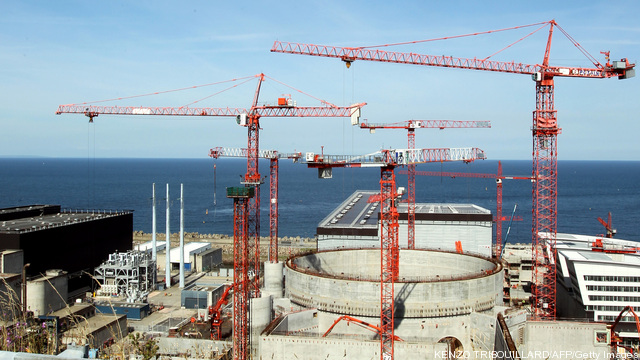On December 12, 2013, the US Department of Energy awarded $226 million to an Oregon company, NuScale, to design, develop, and prepare for licensing review its first small-scale nuclear reactor. A grant for a similar invention was made in 2012 to Babcock & Wilcox, a company with long experience building reactors for nuclear submarines. A number of companies worldwide are exploring these cutting-edge power generators, and some experts view them as the answer to a host of problems that currently beset the nuclear industry, including the high cost of constructing reactors, the risk of catastrophic accidents, and the potential for bomb-making material to proliferate.
The chief difference between a small-scale reactor and a traditional one is physical size and therefore output. They can be built on less than four acres, compared to the usual 20 acres for existing plants. And while the industry standard has an output of approximately 1 gigawatt of electricity (GWe), the small models produce less than 300 megawatts.
Now, today’s very large 1 GWe power plants are sure to be replaced by something else over time. It’s not clear, though, that the size of those plants is the cause of the problems. And if size isn’t the cause, smaller power plants may not be the answer. In November 2013, technical experts from the nuclear industry, government agencies, and independent regulatory bodies gathered in Villingen, Switzerland for an international workshop on small modular reactors convened by Carnegie Mellon University and the Paul Scherrer Institute. As they reviewed current proposals for small reactors, assessed the advantages, and discussed barriers to deployment, it became clear that these experts were pursuing sometimes disparate goals.
The major impetus for building small nuclear plants is the need to reduce the up-front capital costs of constructing power stations. This problem is most keenly felt in the United States, where the price of construction has risen so high that private investors are no longer interested in funding new projects. Not one nuclear plant has been completed in the United States since 1979, (although four are currently under construction) even though nuclear power provides only 20 percent of US electricity. The other spur to building small modular plants is to provide power to rural and remote areas far from major power grids, where demand for electricity is low.
On one hand, then, because the plants are much smaller, the upfront cost of building each one will be lower. On the other hand, to provide the same amount of electricity as a 1 GWe plant, companies would have to construct some 20 smaller plants. So proponents speak of “economies of volume” rather than “economies of scale.” But, although the initial capital required to build one plant will be lower, in fact, the cost of electricity produced by the smaller reactors will likely be higher as a proportion of the capital construction costs…
Read the rest of this article on the Bulletin of Atomic Scientists.
The Bulletin of the Atomic Scientists informs the public about threats to the survival and development of humanity from nuclear weapons, climate change, and emerging technologies in the life sciences. Through an award-winning magazine, our online presence, and the Doomsday Clock, we reach policy leaders and audiences around the world with information and analysis about efforts to address the dangers and prevent catastrophe. With fellowships for students and awards to young journalists, we help educate the next generation.

